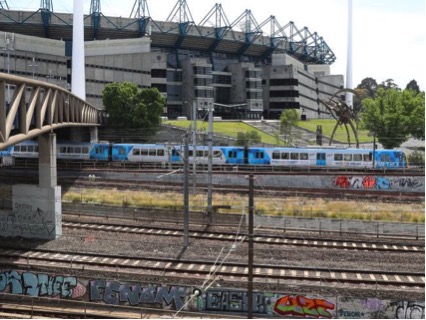
Melbourne compared to the Bronx
by Yair Frid, onGraffiti Removal , February 20, 2018

by Yair Frid, onGraffiti Removal , February 20, 2018
The past Australian Open has attracted tourists and visitors from all over the world, mainly from the UK, US, New Zealand and China, with numbers as high as 80,000 interstate visitors.
Many of these visitors had to make their way to the sport venues and some of the sightseeing views through public transport. Unfortunately a lot of the public transport including the gateway railways are full of graffiti and rubbish, which has made Melbourne earn the comparison to the infamous Brox in New York.
The railway between Richmond and Flinders St stations is the focal point because it runs parallel to the MCG, Hisense Arena and Rod Laver Arena. In addition, the view from these train corridorrs have unsightly graffiti and rubbish from smashed bottles and plastic bags to broken pallets and railway sleepers.
This mix of graffiti and rubbish brings an ugly sight that creates a bad impression on visitors that the area is an unsafe place. Public transport Minister Jacinta Allan has asked for an urgent meeting with transport authorities to begin with the graffiti removal from these corridors.
While the Lord Mayor Robert Doyle has ordered the cleaning up and Public Transport Victoria and VicTrack have identified the issue, it is the operator who has the responsibility to take action to remove this sort of graffiti, which cannot be considered as art.
Conversely, Metro cannot remove the graffiti if they do not own the painted buildings. Hayley McNaughton from the state government said that Metro could not remove graffiti from buildings or walls that they do not own or lease, but what they could do is to provide access to the owner or the council to do the cleanup.
Marcus Williams from Metro specified that they spend more than 10 millions a year on cleaning graffiti from their assets and rail corridors, a task they have to perform monthly because vandalism is constant.
Regardless from whose responsibility is to do the cleanup, graffiti removal becomes an essential measure and it should be done immediately or as soon as possible, because it can create a bad impression of the place. It leaves a public place seem dirty and unsafe, plus it certainly does not add a nice view for visitors.